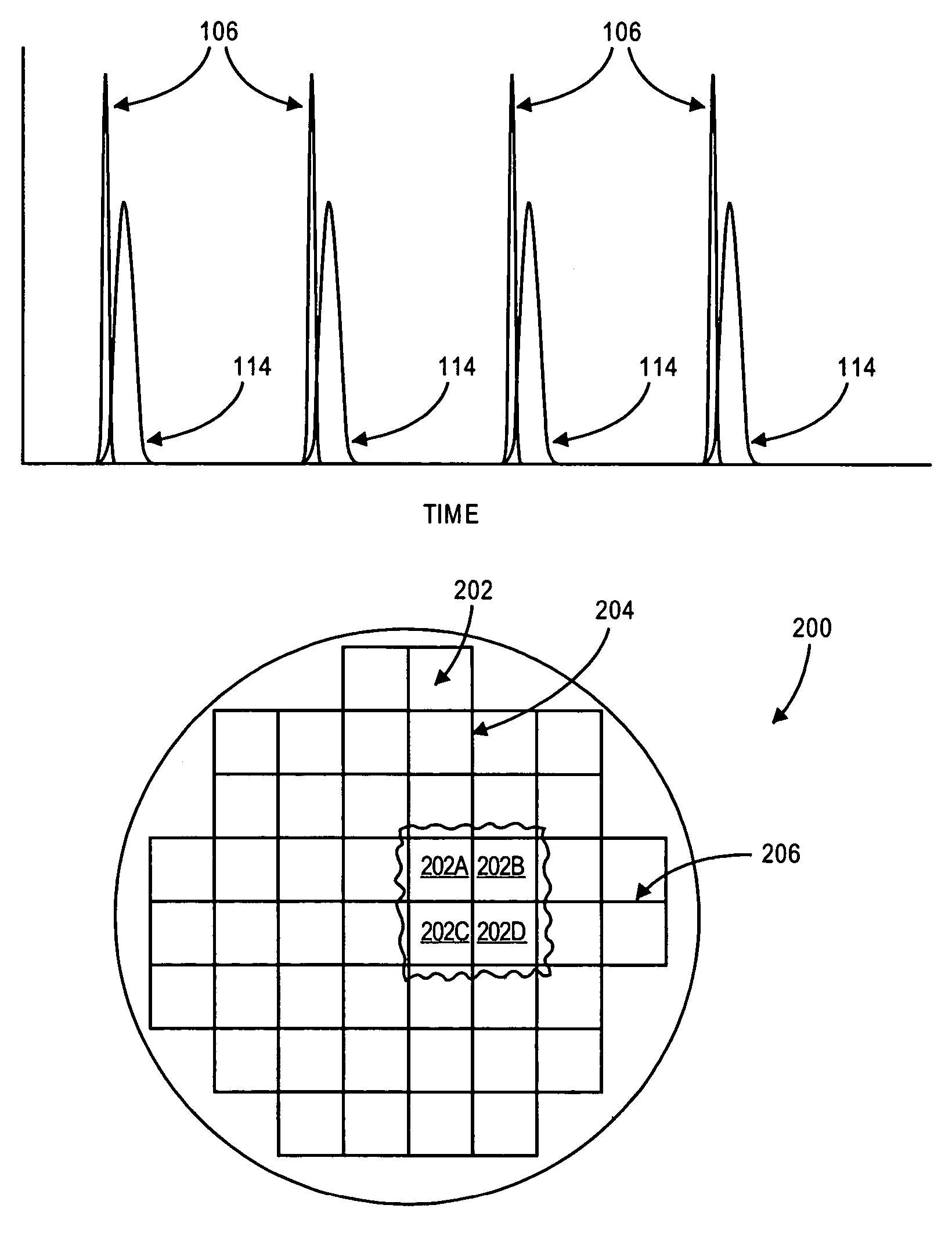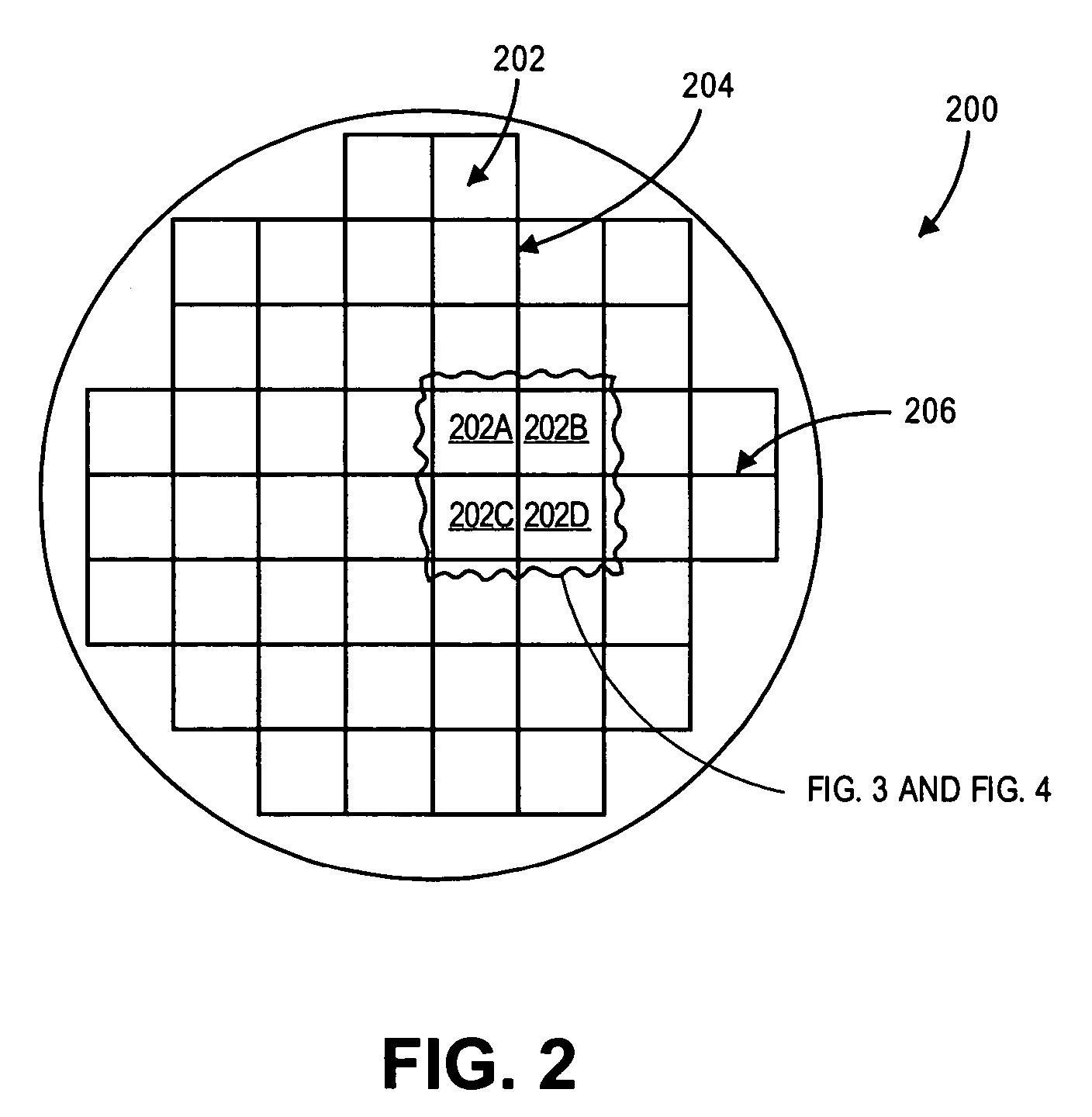Laser micromachining method
a laser scribing and micromachining technology, applied in the field of micromachining, can solve the problems of wafer surface, laser scribing, wafer cutting, etc., and achieve the effect of solving the problem of a number of challenges
- Summary
- Abstract
- Description
- Claims
- Application Information
AI Technical Summary
Benefits of technology
Problems solved by technology
Method used
Image
Examples
Embodiment Construction
[0014]In the following detailed description, a method for laser micromachining a workpiece is disclosed. Reference is made to the accompanying drawings within which are shown, by way of illustration, specific embodiments by which the present invention may be practiced. It is to be understood that other embodiments may exist and that other structural changes may be made without departing from the scope and spirit of the present invention.
[0015]Embodiments of the present invention relate generally to the concept of lowering the ablation threshold of a material to facilitate its ablation at reduced power levels. More specifically, embodiments of the present specification disclose a dual source process whereby a first energy source lowers the ablation threshold of a material so a second energy source can ablate it at a lower power level than would otherwise be possible. While embodiments herein disclose the use of lasers, one of ordinary skill appreciates that these embodiments are not ...
PUM
| Property | Measurement | Unit |
|---|---|---|
| wavelength | aaaaa | aaaaa |
| wavelength | aaaaa | aaaaa |
| wavelength | aaaaa | aaaaa |
Abstract
Description
Claims
Application Information
 Login to View More
Login to View More - R&D
- Intellectual Property
- Life Sciences
- Materials
- Tech Scout
- Unparalleled Data Quality
- Higher Quality Content
- 60% Fewer Hallucinations
Browse by: Latest US Patents, China's latest patents, Technical Efficacy Thesaurus, Application Domain, Technology Topic, Popular Technical Reports.
© 2025 PatSnap. All rights reserved.Legal|Privacy policy|Modern Slavery Act Transparency Statement|Sitemap|About US| Contact US: help@patsnap.com



